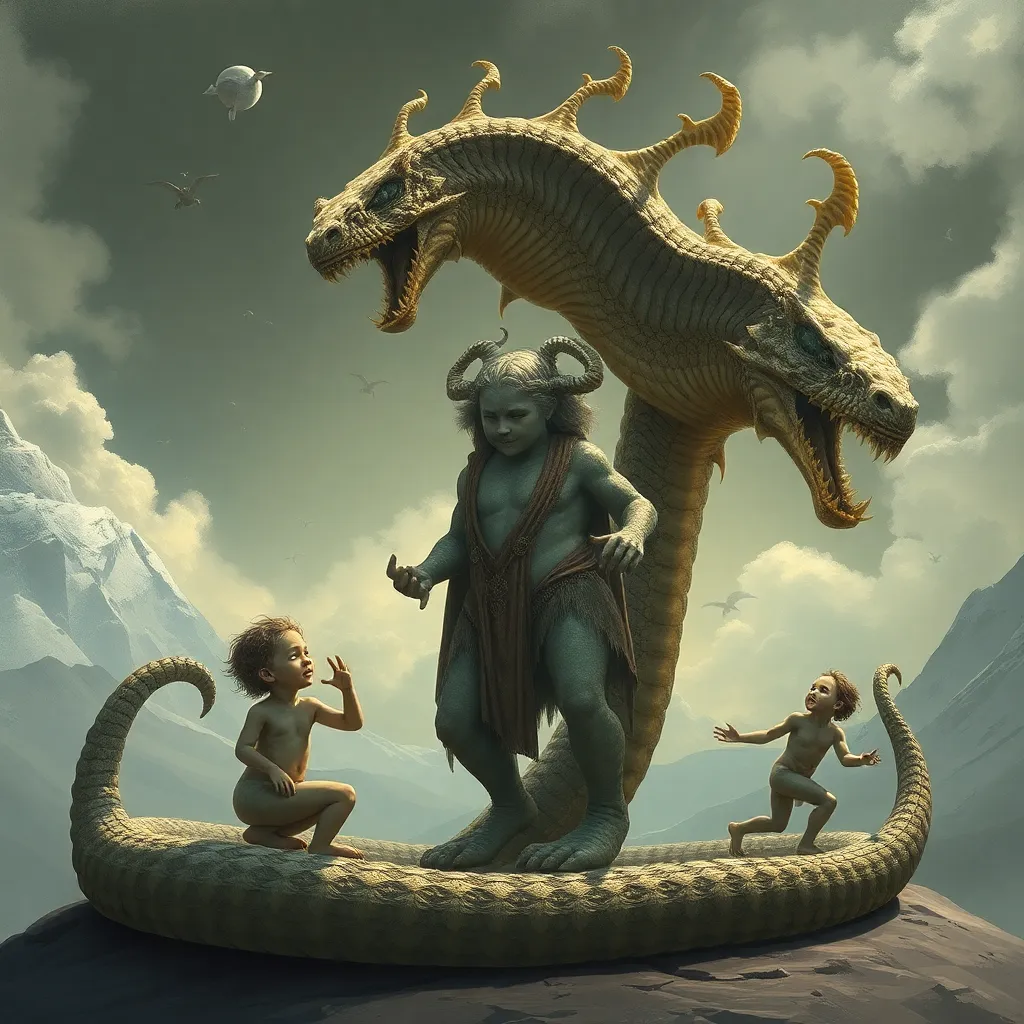The Yeti: A Story of Human Curiosity? Exploring the Myth’s Enduring Appeal and the Quest for the Unknown
I. Introduction
The Yeti, often referred to as the “Abominable Snowman,” is a legendary creature said to inhabit the high mountain ranges of the Himalayas. This elusive figure has captivated the imaginations of adventurers, researchers, and the general public for centuries, embodying the human fascination with the unknown.
The significance of the Yeti extends beyond mere folklore; it has permeated popular culture, appearing in films, books, and art, serving as a symbol of mystery and adventure. This article aims to explore the enduring appeal of the Yeti myth and what it reveals about human curiosity and our quest for the unknown.
II. Historical Origins of the Yeti Myth
The origins of the Yeti myth can be traced back to ancient texts and lore. Early mentions of the creature appear in Tibetan and Nepalese manuscripts, where it is often described as a wild and mysterious being roaming the mountains.
In Himalayan communities, the Yeti holds significant cultural importance. Local folklore depicts the creature as a guardian of the mountains, respected and feared by the indigenous people. Over time, the Yeti legend has evolved, incorporating elements of spirituality and environmentalism, reflecting the relationship between humans and nature in these regions.
III. The Yeti in Popular Culture
The Yeti has made its mark on popular culture in various forms:
- Literature: The creature has been featured in numerous novels and stories, often depicted as a misunderstood guardian of the mountains.
- Film: Movies ranging from animated features to horror films have capitalized on the Yeti’s mystique, enhancing its legend.
- Art and Merchandise: The Yeti appears in paintings, sculptures, and various merchandise, showcasing its widespread appeal.
The role of media in shaping public perception of the Yeti cannot be underestimated. Documentaries and sensationalized reports have contributed to the lore, sparking both intrigue and skepticism among audiences.
IV. Scientific Investigations and Expeditions
Numerous expeditions have been undertaken to uncover the truth behind the Yeti myth. Notable explorations include:
- The 1953 expedition led by Sir Edmund Hillary, who famously sought evidence of the creature.
- The 2011 DNA study that analyzed hair samples claimed to be from the Yeti, which ultimately revealed they belonged to bears.
Scientific studies have often found that reported Yeti sightings can be attributed to misidentifications of known animals, such as bears or other wildlife. However, the advent of technology has significantly impacted modern Yeti research. Drones and genetic analysis have opened new avenues for investigation, but the mystery remains largely unsolved.
V. Psychological and Sociological Perspectives
The belief in myths and legends, such as the Yeti, can be understood through psychological and sociological lenses:
- The Psychology of Belief: Humans have an inherent tendency to believe in the extraordinary, especially when faced with the unknown.
- Societal Needs: The allure of mystery fulfills a societal need for wonder and curiosity, often serving as a coping mechanism for fear and uncertainty.
- Reflection of Human Desires: The Yeti embodies the human desire for exploration, adventure, and the thrill of discovery.
VI. The Role of Tourism and Commercialization
The Yeti myth has had a profound impact on tourism in the Himalayan region. Tourists flock to Nepal and Tibet, drawn by the allure of the creature and the adventure of seeking it out. However, this influx of tourism raises ethical implications:
- Commercialization: The commercialization of the Yeti has led to the commodification of local culture and traditions.
- Preservation vs. Exploitation: Balancing folklore preservation with tourism demands is a challenge for local communities.
Efforts to promote responsible tourism can help maintain the integrity of local cultures while allowing visitors to experience the magic of the Yeti legend.
VII. The Enduring Appeal of the Yeti
The Yeti continues to captivate the imagination for several reasons:
- Mystery and Adventure: The unknown nature of the Yeti appeals to those who seek adventure and the thrill of discovery.
- Comparative Legends: Similar to other legendary creatures like Bigfoot and the Loch Ness Monster, the Yeti represents humanity’s fascination with cryptids.
- Symbol of Exploration: The Yeti symbolizes the spirit of exploration that drives humans to venture into uncharted territories.
VIII. Conclusion
In summary, the Yeti myth encapsulates the essence of human curiosity and our quest for the unknown. From its historical origins to its current representation in popular culture, the Yeti serves as a powerful symbol of exploration and the mysteries that lie beyond our understanding.
Reflecting on the importance of myths like the Yeti, we can gain insights into human nature, our fears, desires, and the universal urge to explore the unknown. As we continue to seek answers in a world filled with mysteries, the Yeti remains a reminder of the beauty and complexity of our imagination.



